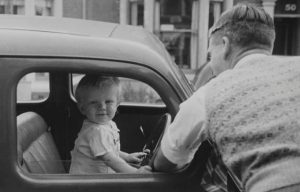Now that you’ve chosen the appropriate car seat for you, it’s time to put it in place. You’ve heard that 75 to 96 percent of adults get it incorrect (different studies and the child’s age), and you want to make sure your child is as safe and secure as possible.
 This is where it becomes tricky because different car seats have different constraints and suggestions for installation. In addition, most cars have a couple of options for mounting your car seat. It all starts with where, regardless of whatever strategy you employ or whose instructions you follow.
This is where it becomes tricky because different car seats have different constraints and suggestions for installation. In addition, most cars have a couple of options for mounting your car seat. It all starts with where, regardless of whatever strategy you employ or whose instructions you follow.
Why are car seats so difficult to understand? We’ve broken the code and you can now install or reinstall your child’s software easily.
-
The Right Choice Of The Location
Which one would you choose, the front or back seat? Baby car seat wholesale should, of course, be put in the back seat. It is the safest place in the car for all youngsters under the age of thirteen. Car seats should never be used in the front seat with an airbag since the airbag can injure a child further during a crash. Furthermore, the back seat keeps the youngster safer from the most prevalent form of collision – frontal.
After that, where should you sit in the back seat? Because the center seating position is the safest in the vehicle, it is the greatest place to put your car seat. This, however, only works if you only have one child. When you have a second kid, you must prepare yourself.
-
Choose The Right Direction
You already know whether you’ll install your car seat rear-facing or forward-facing depending on the seat choosing procedure you went through. Place the vehicle seat in the proper position for your child’s car seat stage.
If you have a convertible or 3-in-1 seat, it will have two belt paths: one for forward-facing installs (usually goes behind the child’s back) and one for rear-facing installs (often runs under the child’s knees). Find the correct belt path for the seat orientation you selected. The routes are indicated on the car seat and described in the instructions.
-
Complete The Homework
When fitting your car seat, there are two things you should know. First, read the owner’s manual for your vehicle, and then read the manual for your car seat. These will provide you with specifics for your vehicle and seat. For example, if you’ve already decided that the safest place to put the car seat is in the center back seat, the manuals will tell you.
If you utilize one lower anchor from every side position if there is LATCH at that position, or do you have to use the seat belt?
Only a few autos allow installation in the intermediate position.
If you’re using both LATCH and the seat belt to attach the seat, your car seat handbook will tell you (MOST do NOT allow this).
3. Secure The Car Seat
LATCH (lower anchor plus tether for children) or seat belt (rarely LATCH and seat belt) — there are now only a few car seats that allow this sort of installation; check and make sure the car seat handbook states it’s an allowed way.
Because each car seat and vehicle is unique, it’s critical to carefully follow the recommendations in the aforementioned documents.
-
Set The Angle
Car seats must be placed at different angles depending on whether they are rear-facing or forward-facing, just like they have two separate belt courses. Some seats have reclining positions that can be adjusted. Every seat will have an angle indicator, such as a sticker with a line or a bubble with a range. Depending on the child’s age, several seats offer different levels to choose from.
Make sure your automobile is parked on a level area so you can check the accuracy of the level indicator.
If getting the right angle with just the seat adjustment is difficult, some seats allow you to insert a pool noodle or rolled towel at the bottom of the vehicle seat to alter the angle.
-
Tethering
For forward-facing installs, car seat specialists advise using the tether strap. In a crash, the tether strap prevents forward head movement (excursion).
Tether anchor points for your car can be found in the manual or indicated on the vehicle. Check to see if it’s a cargo hook or another form of supplementary anchor. Bring the car seat tether strap over the top of the vehicle seat. Attach the strap to the tether anchor point on the automobile.
Conclusion
It’s sometimes beneficial to have hands-on teaching, regardless of what you’ve read. Alternatively, get your installation examined by a Child Passenger Safety Technician. Visit the Safe Kids website to find a local technician.
Researchers do not suggest getting your car seat to a hospital or fire station without first ensuring that the technician is educated and certified.
Just like you should only choose the best and certified manufacturer for your biometric home safe to avoid safety issues and a reputable bio media filter manufacturer to give your pool and aquariums a new life.
